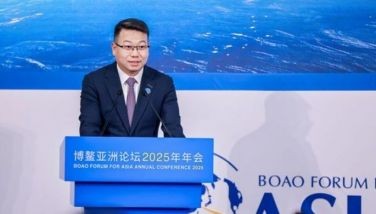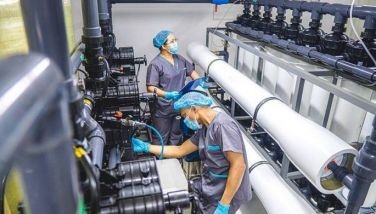The windmills of Batanes
August 30, 2004 | 12:00am
It’s may not be a new tourist destination in Batanes but the wind diesel hybrid plant perched on three hills has certainly helped tourism by providing the province with electricity 24 hours a day.
"This is the first of its kind that is commercially running. It can be a prototype for other remote islands like us," said former Batanes congressman and current Education Secretary Florencio Abad. "People are now talking of putting up ice plants and storage for fish and lobsters, which are exported to Taiwan."
The power plant was especially designed for Batanes with First Philippine Energy Corp., a subsidiary of First Generation Holdings Corp., as the turnkey contractor. Dedicated to the development of renewable projects, FPEC linked up with French firm, Vergnet, to design three 600-kilowatt wind turbines and with Australian company, Advanced Energy System, to do the integration of the whole system.
During a typhoon, the wind mills bend fully to avoid being toppled down by the strong winds. Because of the tilt-down design of the towers, the turbines can be lowered and raised again once the weather improves. During times when there are not enough winds to run the turbines, it automatically shifts to 2 x 500-kw diesel generators. Thus, ensuring the continuous generation of electricity for the island.
Putting up a wind project in Batanes started in 1997 after a visit by First Philippine Holdings Corp. chairman Oscar Lopez. FPHC made a proposal to the provincial government. At that time, electricity entirely provided by National Power Corp. was subsidized by the national government and ran only from six in the morning to the midnight.
(An unsaid bonus is the savings generated by the national government, which used to subsidize the province’s electricity supply from the National Power Corp.)
"That was about the same time that I had just attended a presentation on wind power by the United States Agency for International Development. During the presentation, Batanes was identified as one of the sites having the most potential to have wind power," said Abad.
Raising $65 million to finance the project was tough. Part of the funding came from the congressional countryside development fund allocation and from the General Appropriations Act budget . A loan was also taken from the Development Bank of the Philippines.
"If you look at the project, it is a success story of a partnership between the private sector and government. If you live in a island and you’re poor, you think you can’t do things that have never been done before. But this project shows that you can turn your situation around and make what seems to be the downside into an opportunity," said Abad.
"This is the first of its kind that is commercially running. It can be a prototype for other remote islands like us," said former Batanes congressman and current Education Secretary Florencio Abad. "People are now talking of putting up ice plants and storage for fish and lobsters, which are exported to Taiwan."
The power plant was especially designed for Batanes with First Philippine Energy Corp., a subsidiary of First Generation Holdings Corp., as the turnkey contractor. Dedicated to the development of renewable projects, FPEC linked up with French firm, Vergnet, to design three 600-kilowatt wind turbines and with Australian company, Advanced Energy System, to do the integration of the whole system.
During a typhoon, the wind mills bend fully to avoid being toppled down by the strong winds. Because of the tilt-down design of the towers, the turbines can be lowered and raised again once the weather improves. During times when there are not enough winds to run the turbines, it automatically shifts to 2 x 500-kw diesel generators. Thus, ensuring the continuous generation of electricity for the island.
(An unsaid bonus is the savings generated by the national government, which used to subsidize the province’s electricity supply from the National Power Corp.)
"That was about the same time that I had just attended a presentation on wind power by the United States Agency for International Development. During the presentation, Batanes was identified as one of the sites having the most potential to have wind power," said Abad.
Raising $65 million to finance the project was tough. Part of the funding came from the congressional countryside development fund allocation and from the General Appropriations Act budget . A loan was also taken from the Development Bank of the Philippines.
"If you look at the project, it is a success story of a partnership between the private sector and government. If you live in a island and you’re poor, you think you can’t do things that have never been done before. But this project shows that you can turn your situation around and make what seems to be the downside into an opportunity," said Abad.
BrandSpace Articles
<
>
- Latest
Latest
Latest
March 13, 2025 - 11:00am
March 13, 2025 - 11:00am
March 11, 2025 - 10:15am
March 11, 2025 - 10:15am
February 21, 2025 - 9:00am
February 21, 2025 - 9:00am
Recommended
March 28, 2025 - 12:00am




























